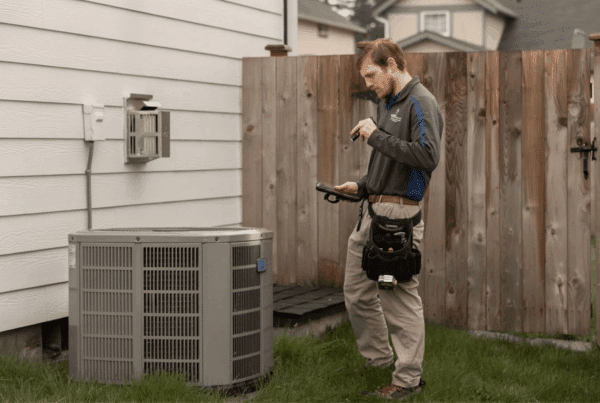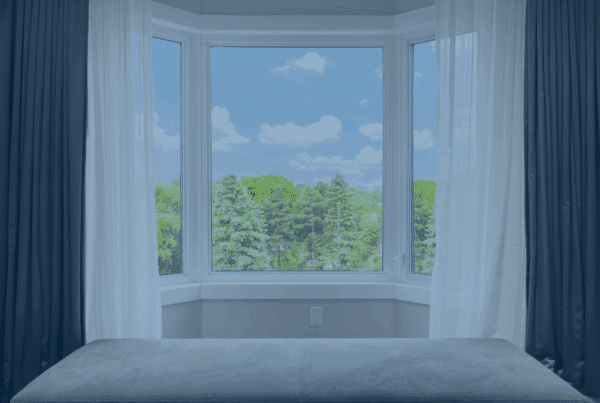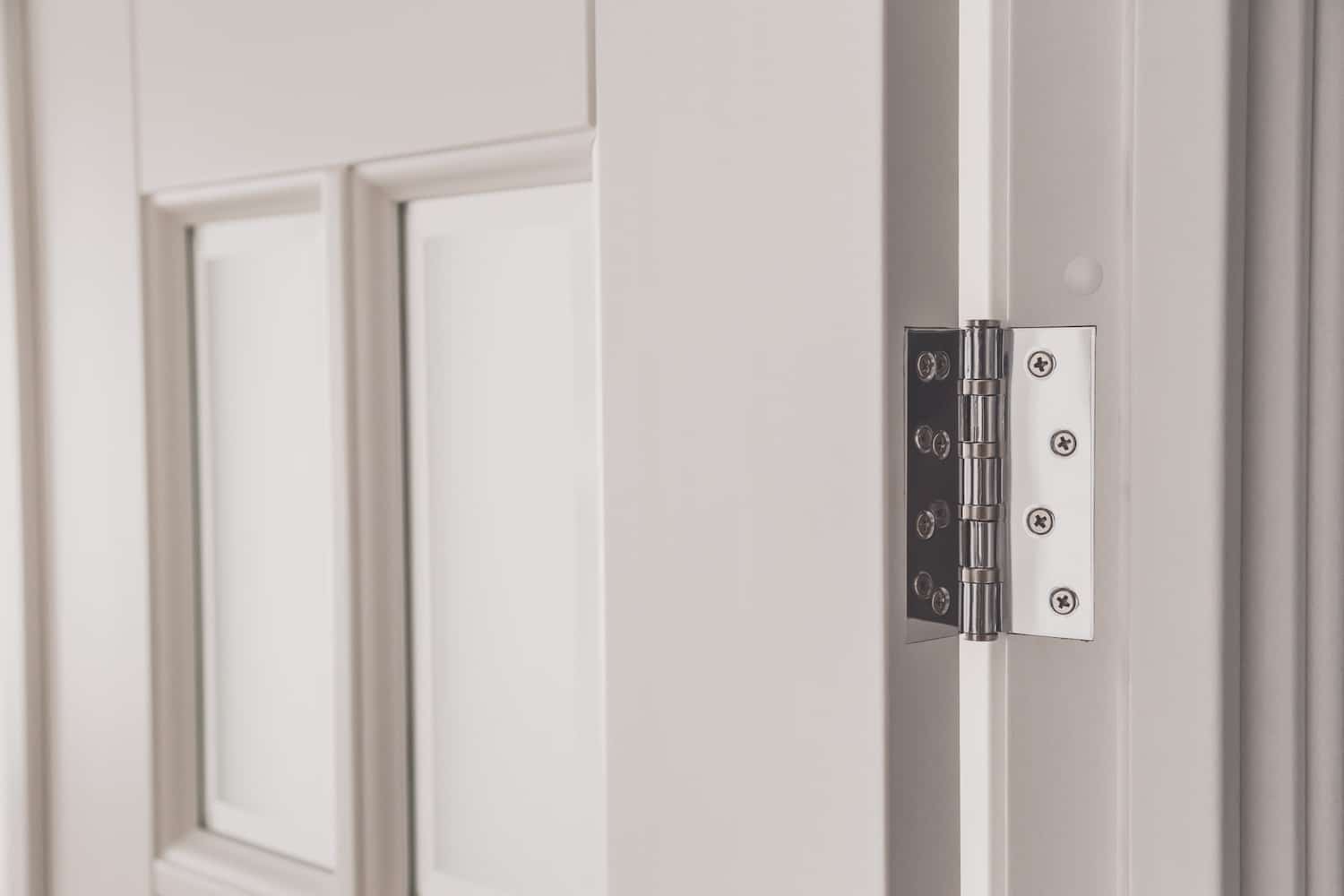
A misaligned door can be frustrating, whether it sticks, swings open on its own, or leaves an uneven gap. Often, the problem comes down to wonky door hinges—with the right approach, you can adjust it without damaging the door or giving yourself a headache.
This guide walks you through the process step by step, from spotting common alignment issues to adjusting them in a snap, plus some tips on how they can be avoided.
Identifying Door Alignment Issues
Before reaching for a screwdriver, take a closer look at what’s happening with the door. Common signs of hinge-related misalignment include:
- The door rubs against the frame or floor when opening or closing
- Visible gaps between the door and frame are uneven
- The door won’t stay closed or swings open on its own
- Latch misalignment, making it difficult to shut properly
To confirm if the hinges are the issue, check for loose screws, shifting hinge plates, or gaps where the hinges meet the frame.
Sometimes, years of use or changes in humidity cause hinges to settle unevenly, leading to these problems.
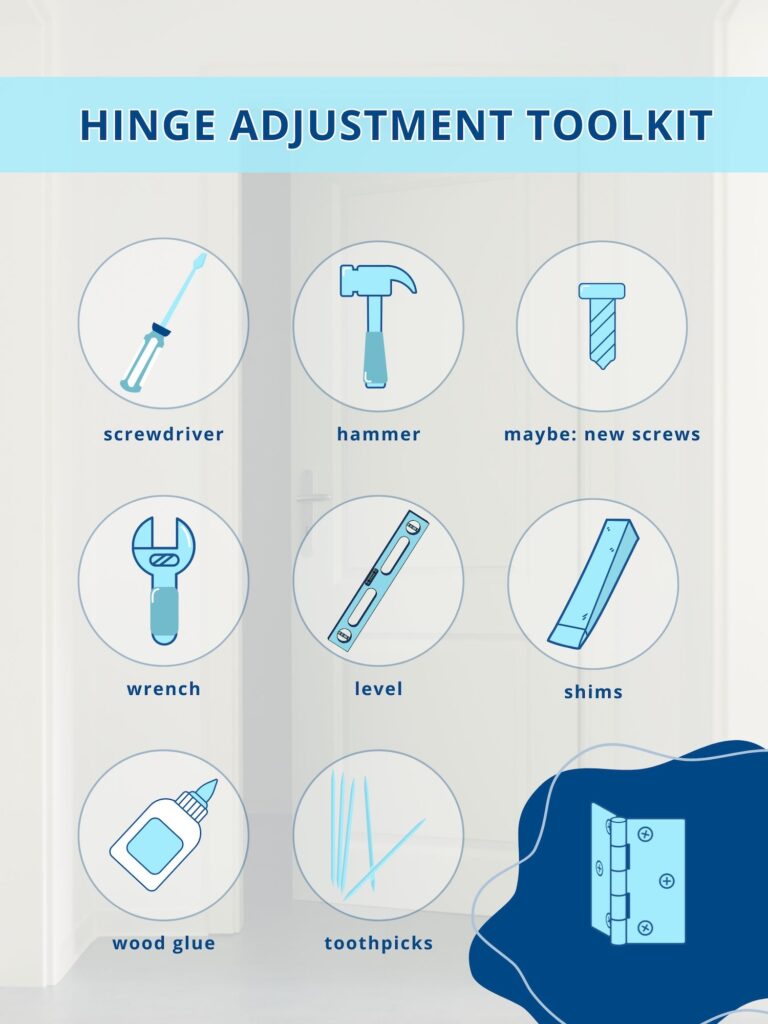
Tools You’ll Need
Fixing wonky hinges doesn’t require heavy-duty tools, but having the right ones on hand makes the job easier. Grab:
- A Phillips screwdriver
- A hammer
- A level
- Shims (thin wedges for small adjustments)
- An adjustable wrench (for fine-tuning hinge angles)
- Wood glue and toothpicks (for stripped screw holes)
How to Adjust the Troublesome Door Hinges
Once you have the right tools, it’s time to fix those wonky hinges. Follow these steps to realign your door based on its defect and get it closing properly again.
1) Tighten Loose Screws
Loose screws are one of the most common culprits behind a misaligned door. Over time, they can work their way out, causing the hinges to shift.
- Start by checking each screw on the hinges, both on the door and the frame
- Use a Phillips screwdriver to tighten them securely
- If a screw keeps turning without tightening, the hole is likely stripped
For a stripped screw hole, try this fix: insert a few toothpicks coated in wood glue into the hole, let them dry, then reinsert the screw. This gives it fresh material to grip.
2) Adjust Hinge Positions
If tightening the screws doesn’t solve the issue, small hinge adjustments might do the trick.
- Loosen the screws on the problem hinge slightly
- Shift the hinge in the necessary direction to realign the door
- Tighten the screws back down and test the door
Common adjustments:
- If the door sticks or drags on the floor, move the bottom hinge slightly inward
- If the door swings open on its own, adjust the top hinge closer to the frame
- If the door has an uneven gap, shift hinges up, down, or side to side as needed
3) Use Shims
Shims help fine-tune hinge placement when small tweaks aren’t enough.
- Place a thin shim (like a piece of cardboard or plastic) behind the hinge on the door or frame side
- Secure the hinge back in place and test the door’s movement
- If needed, try adding or removing layers for better alignment
Shims are especially useful for fixing a door that won’t latch properly due to slight hinge misalignment.
4) Bend the Hinge for Fine-Tuning
For minor adjustments, bending the hinge slightly can help shift the door into place.
- Use an adjustable wrench to grip the hinge knuckles
- Gently bend them inward or outward depending on the needed correction
- Test the door after each small adjustment
This method is useful when a door swings open or shut on its own, as it can change how the door rests in the frame.
Test it Out
Once adjustments are made, check to see if the door opens, closes, and latches smoothly.
Look for:
- No rubbing, sticking, or uneven gaps
- A door that stays in place rather than swinging open or shut
- A latch that lines up properly with the strike plate
If the door still isn’t sitting right, go back and make small tweaks to the hinge placement or shimming.
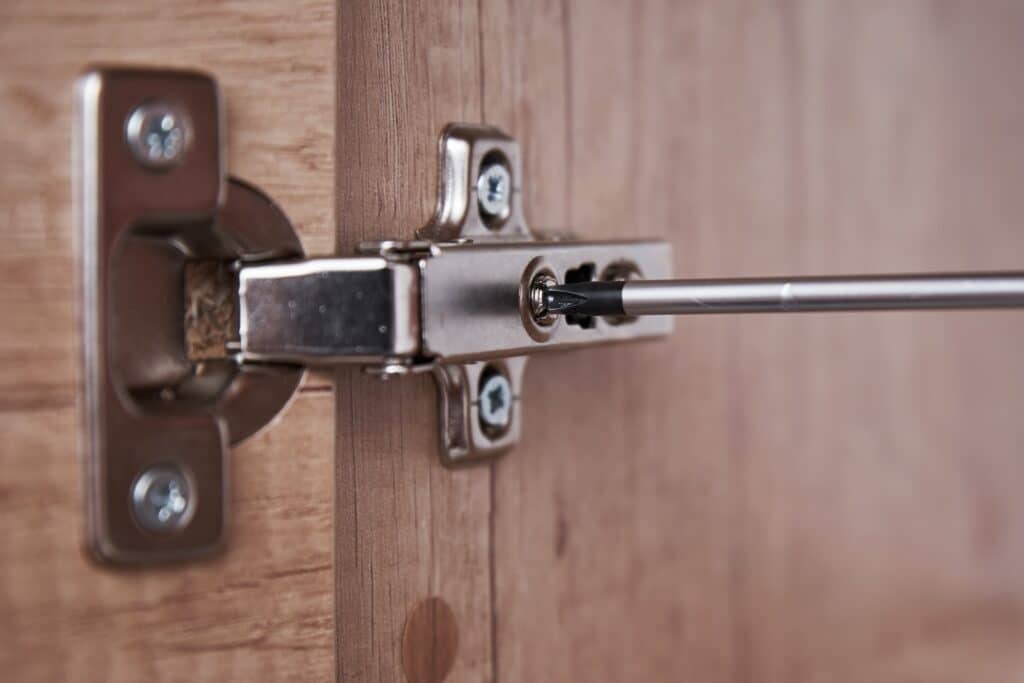
Other Recommended Maintenance
Keeping door hinges in good shape can prevent misalignment and extend the life of your doors. A few simple habits make a difference:
- Listen for early signs of trouble like squeaking, sticking, or a door that doesn’t close as easily as it used to. Small issues can turn into bigger problems if ignored.
- Tighten hinge screws occasionally, especially on high-traffic doors like entryways or bathrooms. Loose screws often cause sagging or rubbing before it becomes noticeable.
- Check for wear on the hinges—rust, warping, or bent knuckles can cause alignment issues that simple adjustments won’t fix. If hinges look damaged, replacing them is a better long-term fix.
- Watch for seasonal shifts—humidity can cause wood doors to swell or shrink. If your door sticks more in summer or feels loose in winter, minor hinge tweaks may be needed throughout the year.
- Be mindful of added weight—coats, bags, or hanging organizers on the back of a door put extra strain on hinges, which can pull the door out of alignment over time.
Regular maintenance keeps doors working smoothly and helps you catch minor issues before they turn into full replacements or costly repairs.
When to Call a Professional
If you adjust the door hinges and it doesn’t fix the issue, there could be a bigger problem at play. Some door alignment issues aren’t just about the hinges—they can point to structural concerns, moisture damage, or poor installation.
A professional should inspect if:
- The door frame is shifting or pulling away from the wall—this could indicate foundation movement, settling, or hidden water damage.
- Multiple doors in your home are misaligned—when several doors are sticking, not latching, or swinging open, it could mean the house is settling unevenly.
- You notice cracks around door frames or walls nearby—this could be a red flag for foundation issues that need further inspection.
- The problem keeps coming back—if a door won’t stay adjusted no matter what you do, there may be an underlying cause like excessive moisture, warped framing, or poor original installation.
Since door misalignment can sometimes signal larger home concerns, a professional inspection can help rule out hidden issues.
If there’s more going on than just a loose hinge, it’s better to catch it early before it leads to bigger, more expensive repairs.
Conclusion
A wonky door isn’t just annoying—it’s a sign that you should adjust the hinges, frame, or even the home itself. Luckily, most hinge issues are quick fixes. However, if the door still won’t cooperate after your adjustments, it’s worth looking at the bigger picture.
Alignment problems that keep coming back could mean there’s more going on behind the scenes—settling, moisture issues, or structural shifts. If something seems off with your doors (or anywhere else in your home), schedule an inspection today and get ahead of potential problems before they grow.

